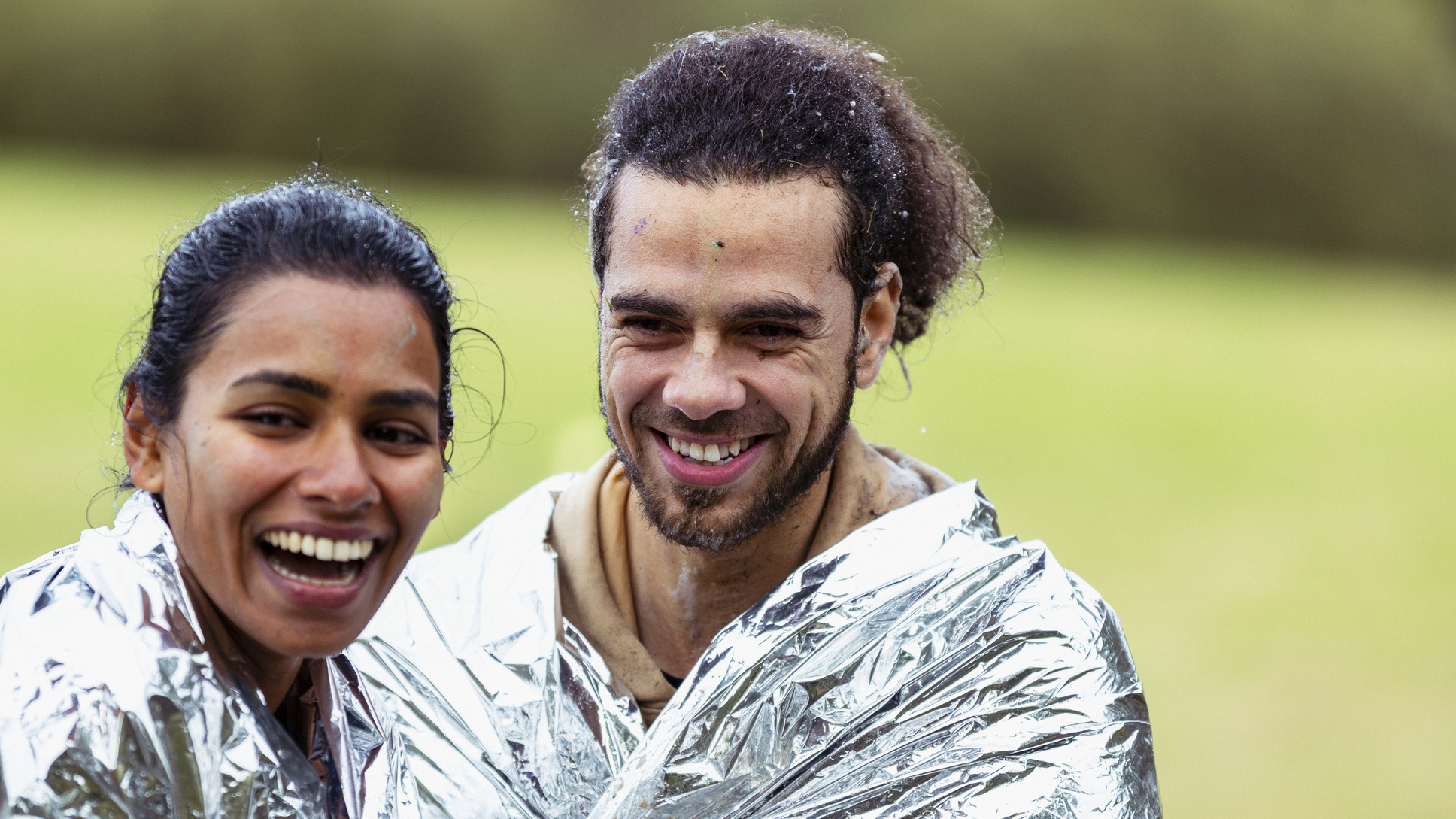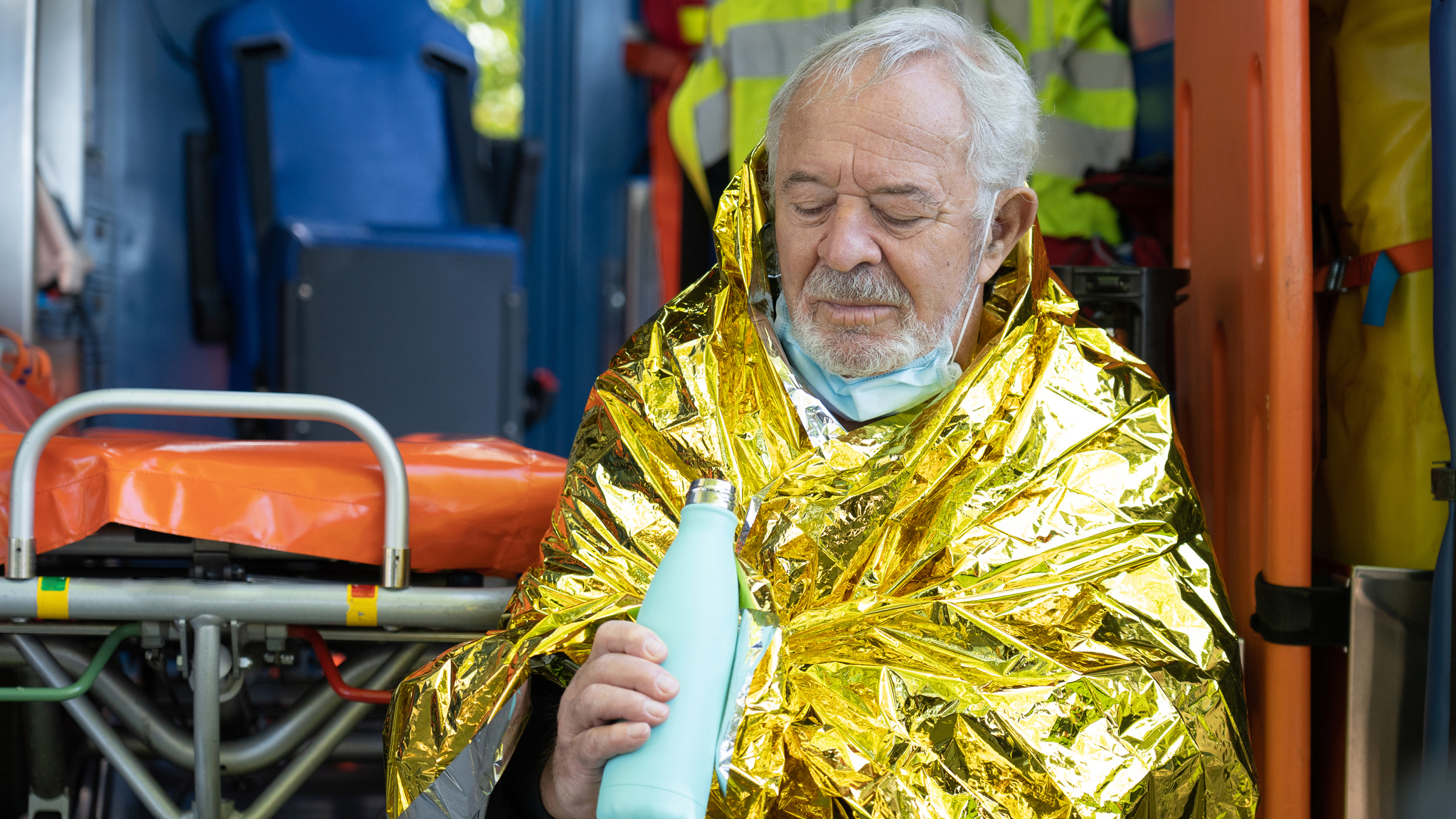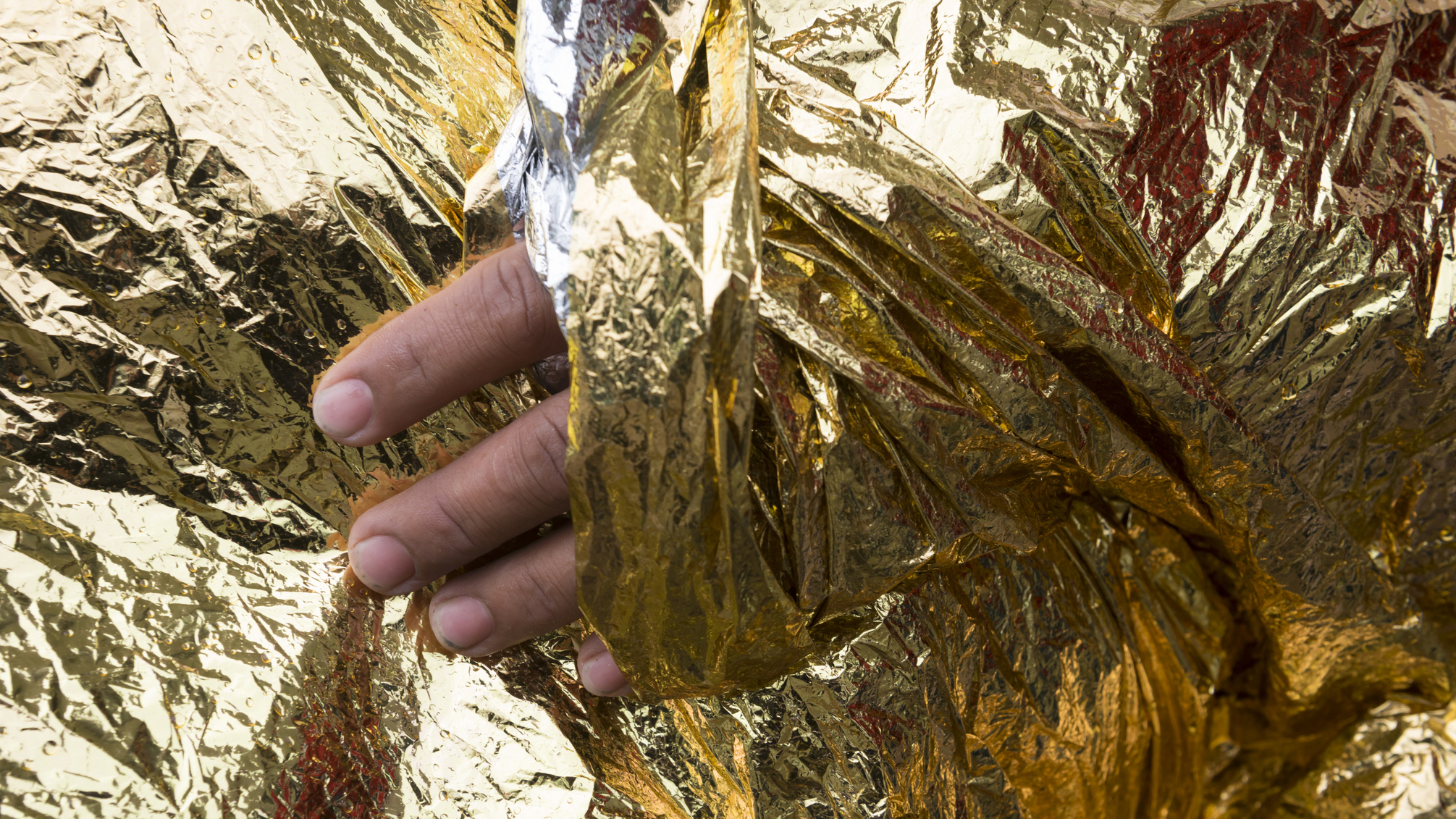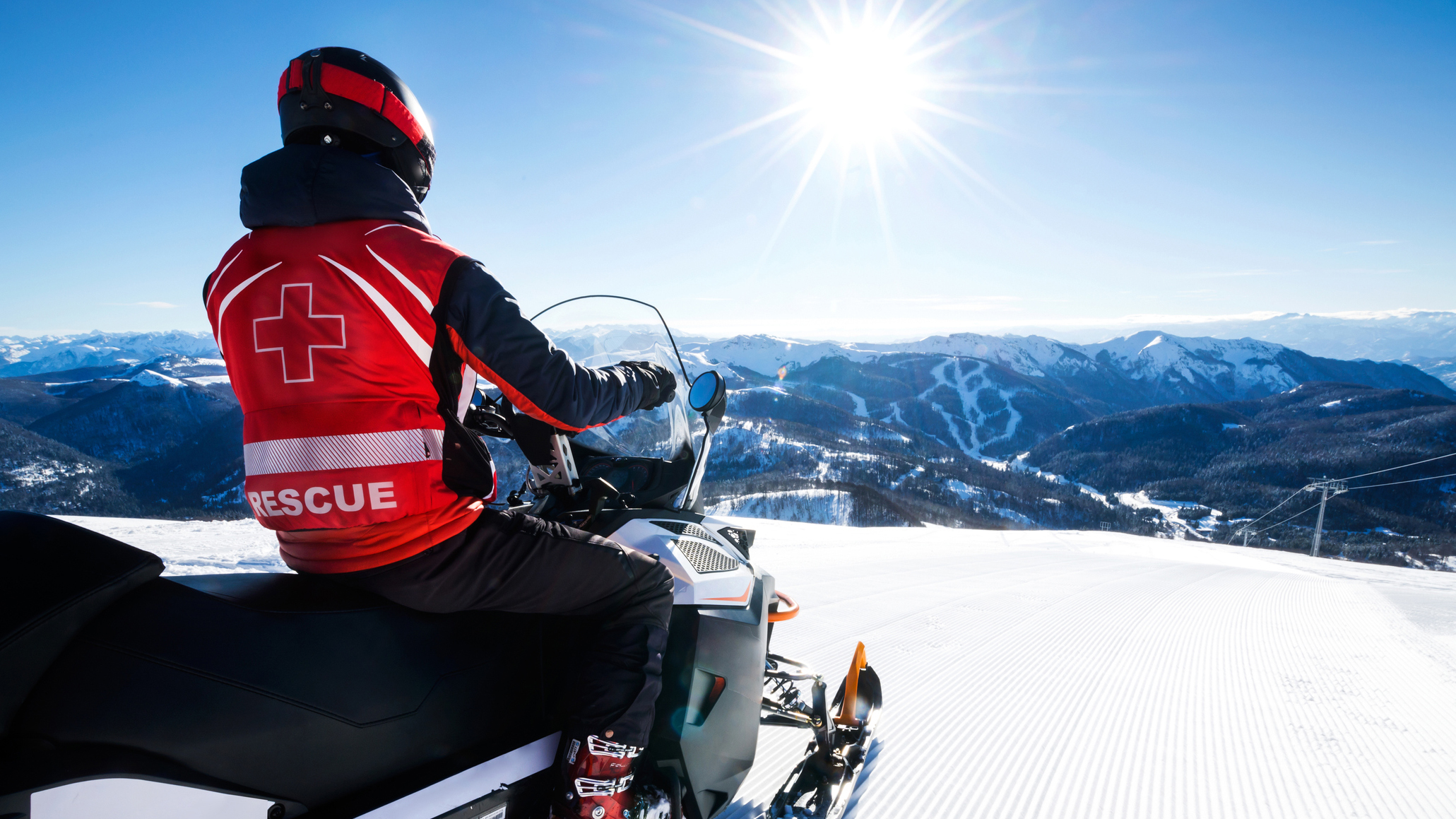5 reasons you need an emergency blanket: cover yourself for all eventualities
Our quintet of reasons you need an emergency blanket in your daypack, from fighting back against the cold to signalling for help

Several great explorers only made their startling and important discoveries because they were wearing an insulating blanket. An explorer called Cassini revealed staggering worlds of ice, one named Galileo revealed a landscape of unimaginably violent volcanism, while another by the name of Huygens discovered immense and beautiful lakes.
These explorers weren’t people. They were spacecraft sent to the Solar System’s nearest gas giants to learn more about them and their mysterious moons. They were each adorned, in one way or another, by a protective coat to guard against the extremes in temperature they would encounter. First developed by NASA in the 1960s, the space blanket’s gold or silver reflective sheen has become a familiar sight during space missions. It helped Cassini reveal Saturn's geyser-spewing ice moon of Enceladus, Galileo discover the tortured volcanic moon of Io around Jupiter and Huygens touch down on Titan, Saturn’s largest satellite.

However, this wonderful innovation also has its uses on our terrestrial planet, thanks to its ability to reduce heat loss from a person’s body. Many still refer to them as space blankets, but for use in the great outdoors they’re often called emergency blankets.
An emergency blanket is one of those bits of kit you hope never to use. However, there are several reasons you need an emergency blanket, which I'll get into a moment. You’re much more likely to see them draped around exhausted runners at the finish line of a marathon than you are during your time in the hills, yet they are absolutely a hiking essential and should be in your daypack every time you head into the backcountry.
Meet the expert

Alex is a qualified Mountain Leader and President of the London Mountaineering Club. He enjoys time spent in the mountains more than anything and takes great pleasure in leading less experienced people. When hiking solo, he always carries a blizzard jacket – a form of wearable emergency blanket – and always carries a survival shelter when in a group.
Today's best deals
What is an emergency blanket?
- An emergency blanket is a thin PET sheet coated in aluminum
- It reduces heat loss by halting convection, evaporation and thermal radiation

An emergency blanket is an ultralight sheet of thin, reflective plastic that’s used primarily to combat heat loss and therefore prevent hypothermia. It’s usually made from a thin polyethylene terephthalate (PET) sheet, also referred to as Mylar. The PET is vacuum coated with a vanishingly thin layer of aluminum, thus creating metalized polyethylene terephthalate, or MPET. The sheet has a striking golden or silver color.
Emergency blankets work so well thanks to a trio of benefits. They reduce convection, the transfer of heat from a body to its surroundings; halt the heat lost by the evaporation of liquid from the body; and the highly reflective surface stops thermal radiation in its tracks, bouncing heat back towards the body. Basically, it deals with most of the ways your body can lose heat.
It’s a common misconception that an emergency blanket warms a person up. This is not true, it merely prevents heat loss to the surrounding environment. This is why it’s also important to make sure an immobilized casualty is also wearing as many warm layers as possible, while getting them to drink a hot drink and eat plenty of food will help to keep their core temperature up.
All the latest inspiration, tips and guides to help you plan your next Advnture!
1: To prevent heat loss
- An emergency blanket effectively prevents heat loss
- This can be vital in an emergency situation, as it reduces the risk of hypothermia

One of the main dangers in the backcountry is exposure to extreme conditions. Hypothermia is an illness that happens when your ability to regulate your temperature is overridden by the cold. The causes of hypothermia include wearing clothes unsuited to the temperature and conditions, becoming wet in freezing conditions or submersion into cold water. If untreated, hypothermia leads to death.
One of the main ways we keep warm when exploring the great outdoors is through exertion. This is why you can go for a run on a freezing cold day wearing far fewer layers than you would for a gentle walk, as you can rely on your body to create heat. It’s also why we often end up sweating through our base layers during strenuous ascents. Generally, when we’re exploring outdoors, we wear less than we would if we were stationary. Staying relatively dry and keeping moving are key to avoiding hypothermia in winter.
However, an event like a badly sprained ankle, a slip into a freezing cold stream or a fall through ice moves the goalposts, turning an enjoyable adventure into an emergency situation. In all these cases, preventing further heat loss is vital, which is exactly what a space blanket is for.
So, wrap a casualty up good and proper – though in the case of someone who’s also dripping wet, they need to get out of soaked clothes and into dry clothes as soon as possible, before you apply the blanket. If you’re hiking in a group, having a survival shelter will be a massive help in these situations too.
2: It’s also waterproof
- An emergency blanket is completely waterproof
- However, unlike Gore-Tex or similar, it’s not breathable

We’ve established that staying dry is pretty key to keeping warm. This is because water robs your body of heat energy when it evaporates, which is why we sweat when we need to cool down. The good news is that an emergency blanket is completely waterproof, so once you’re wrapped up in one, you shouldn’t get any more wet than you were previously. However, unlike a Gore-Tex waterproof jacket, a space blanket isn’t breathable, so it won’t allow moisture to escape from within either. This is why sleeping in one isn't a very comfortable experience, as you'll probably wake covered in sweat.
3: You don’t have to worry about windchill
- An emergency blanket is windproof
- This means it eliminates heat loss through convection

One of the three ways an emergency blanket prevents heat loss is by stopping convection in its tracks – in other words, it’s windproof. This deals with the adverse effects of windchill, which is a serious danger to exposed skin and greatly increases the rate of heat loss through convention when combined with low ambient temperatures. So, even if your clothing is doing most of the work keeping you warm, you can use a space blanket on any exposed skin to ward off windchill.
4: You can use it to signal for help
- As an emergency blanket is shiny, it’s very visible to rescue services
- It can be used as a flag to signal for help

We all love shiny things, right? A useful side benefit of a emergency blanket’s make up is that it is highly reflective. This means that the glare from a helicopter’s searchlight or the beam of a Mountain Rescue member’s headlamp shouldn’t have much trouble locating a casualty wrapped in one. Even in situations where there’s no danger from the cold but you’re still in need of assistance, you can still put your emergency blanket to use by waving it in the air to attract attention.
In a predictable twist of fate, the fact that a space blanket reflects your radiated heat back inwards means that you won't show up on thermal imaging systems, as you won't be giving off heat. So, it's admittedly not all good news where visibility is concerned.
5: It’s wonderfully lightweight and portable
- Emergency blankets weigh very little
- They take up very little room in a backpack

One of the main reasons emergency blankets are prized by hikers, campers and other adventurers is that they are ultralight and take up very little space in a backpack. In terms of its ability to guard against hypothermia and, by extension, a fatality, it’s a remarkably light and tiny package. As lightweight as a down jacket is, it can’t match the gram for gram value of an emergency blanket.
When new, it's also folded up into a tight little package. However, bear in mind that after its first use, getting it back into this compressed unit will be nigh on impossible.
Alex is a freelance adventure writer and mountain leader with an insatiable passion for the mountains. A Cumbrian born and bred, his native English Lake District has a special place in his heart, though he is at least equally happy in North Wales, the Scottish Highlands or the European Alps. Through his hiking, mountaineering, climbing and trail running adventures, Alex aims to inspire others to get outdoors. He's the former President of the London Mountaineering Club, is training to become a winter mountain leader, looking to finally finish bagging all the Wainwright fells of the Lake District and is always keen to head to the 4,000-meter peaks of the Alps. www.alexfoxfield.com

